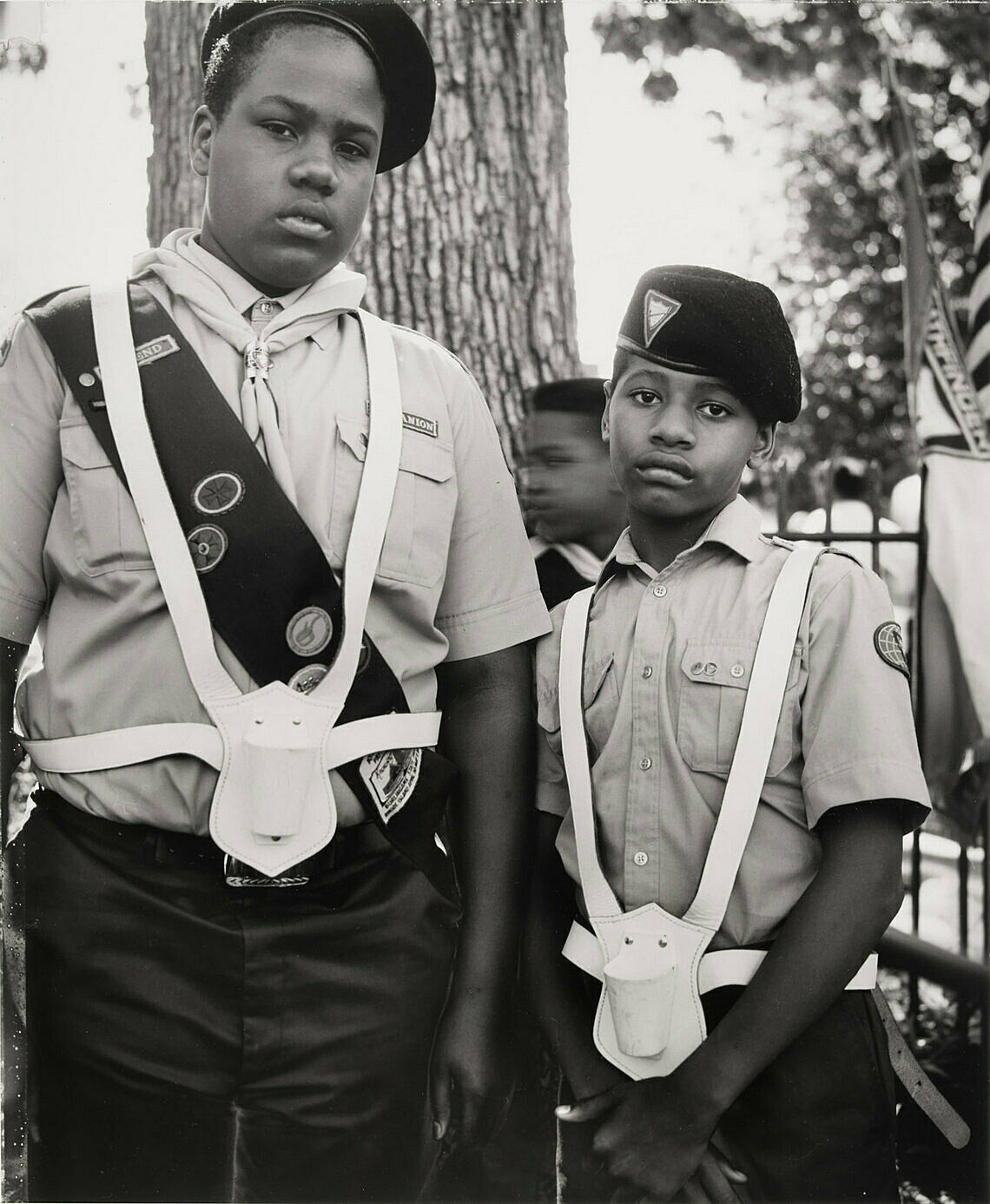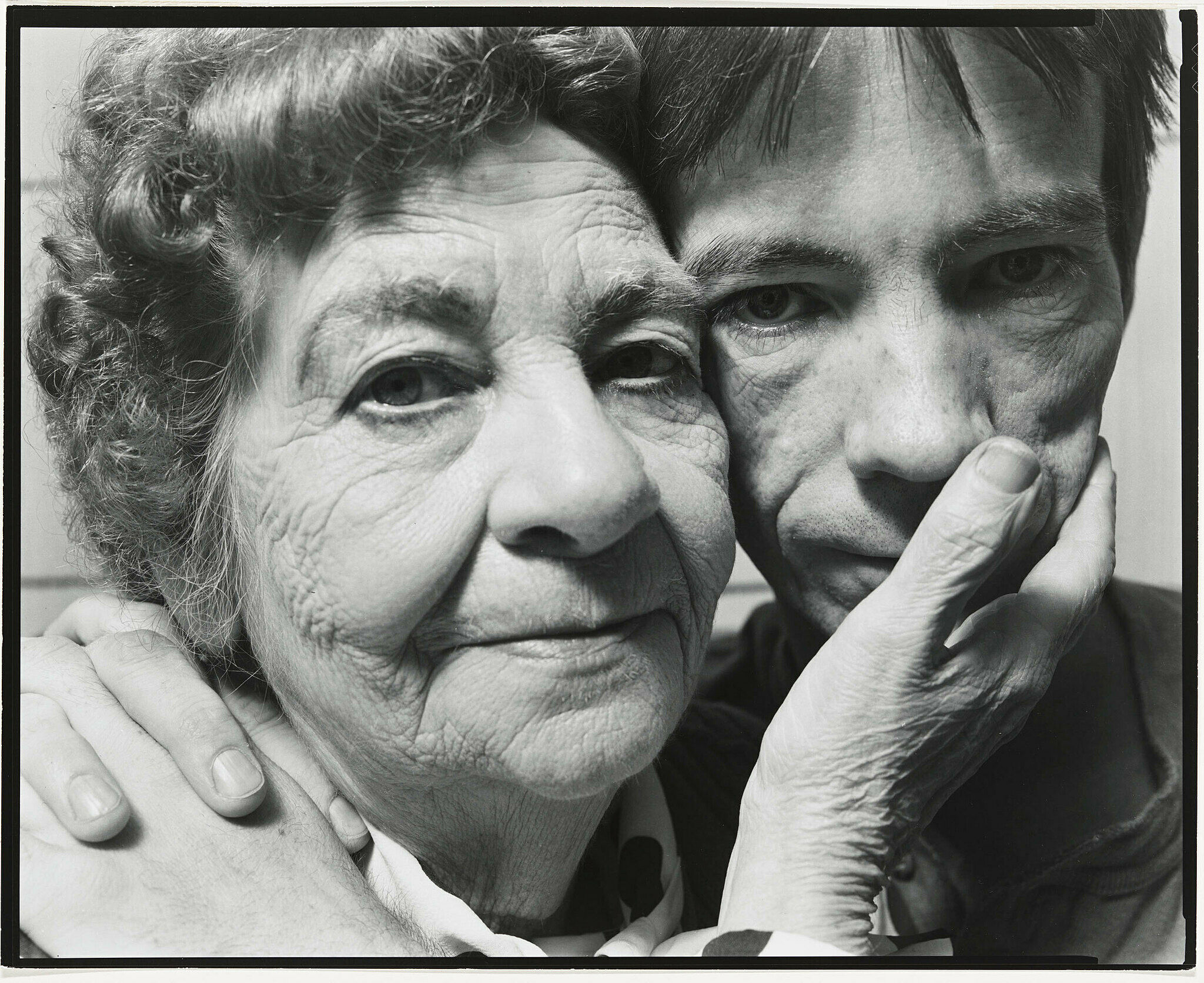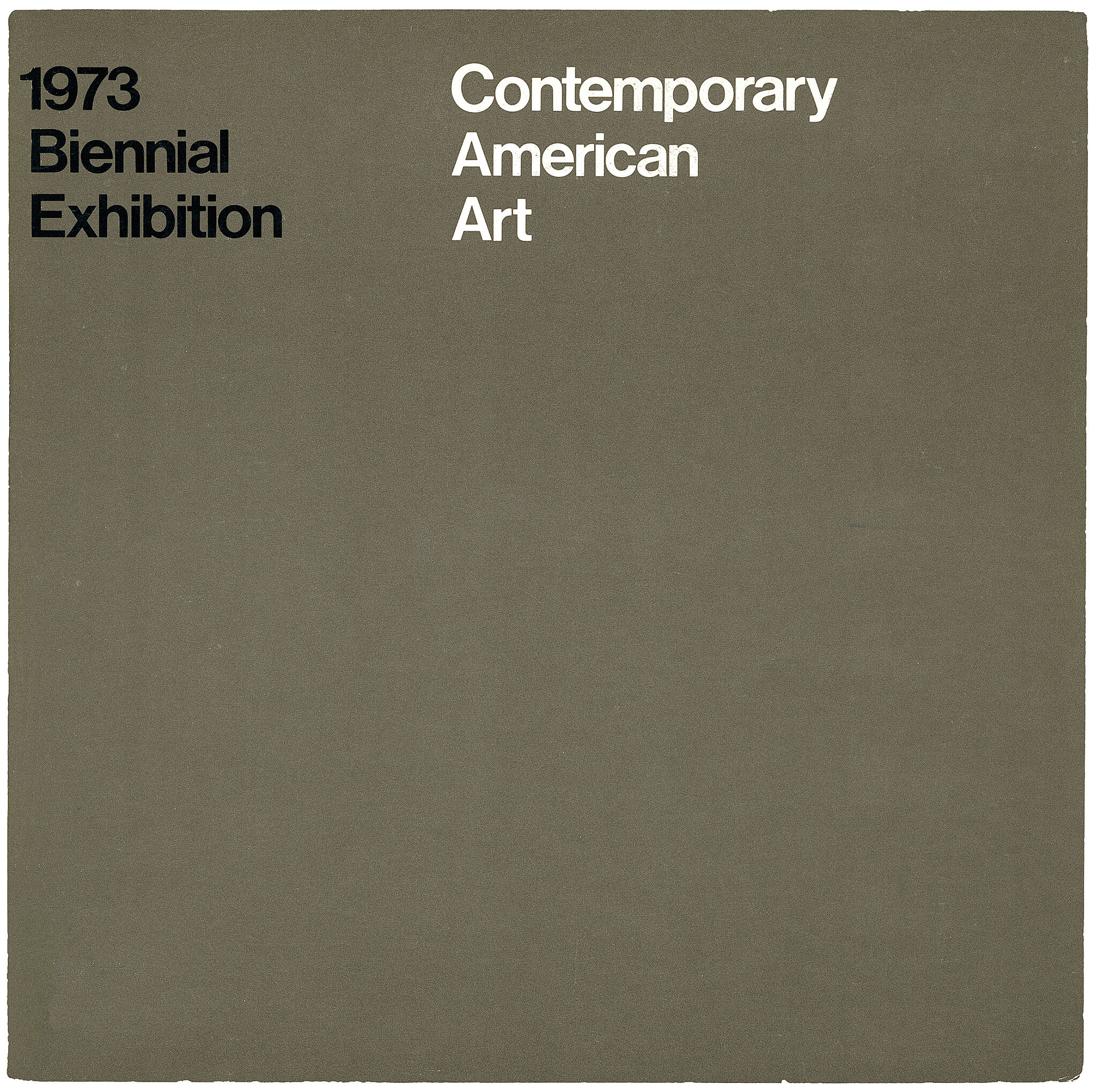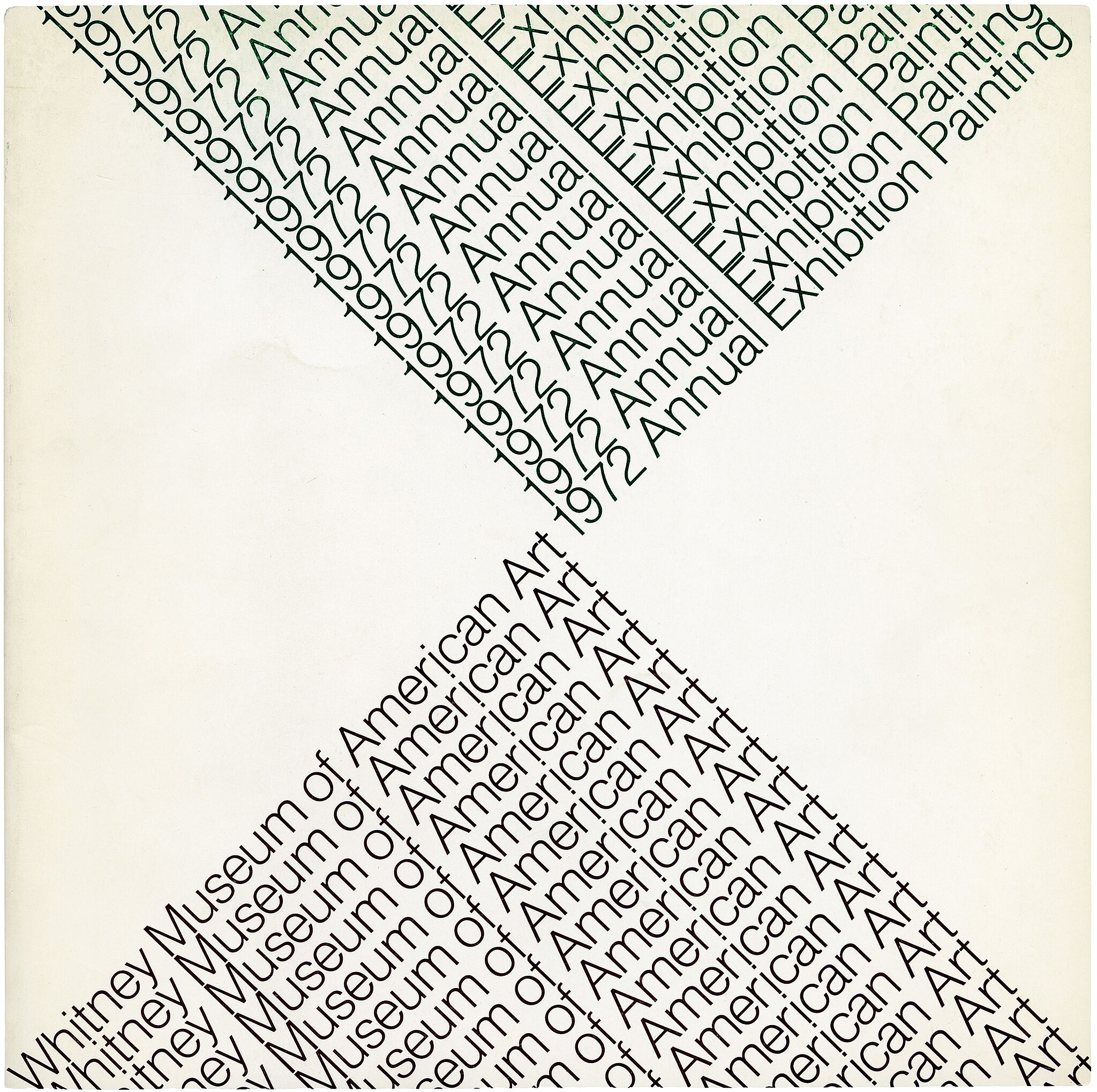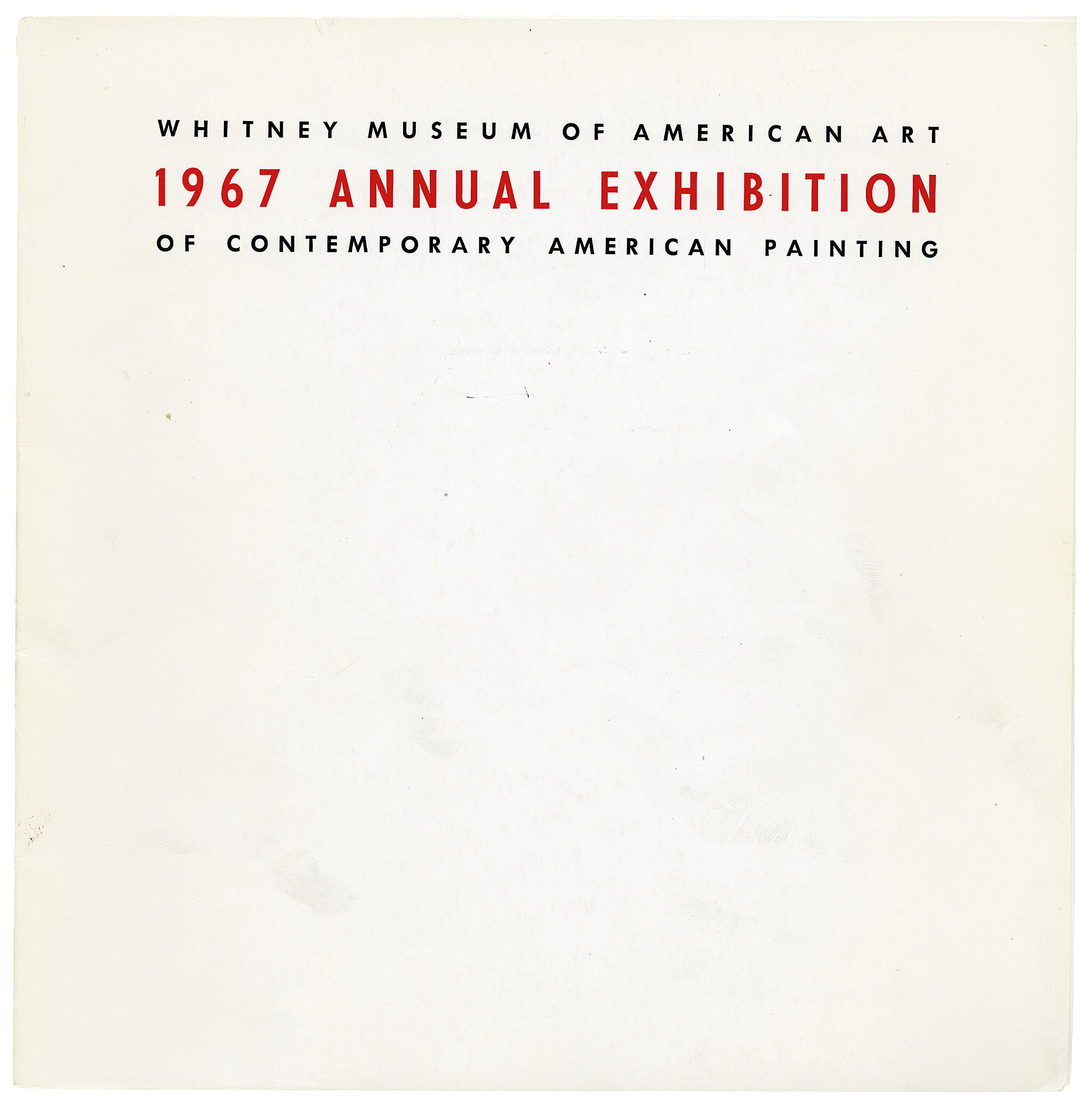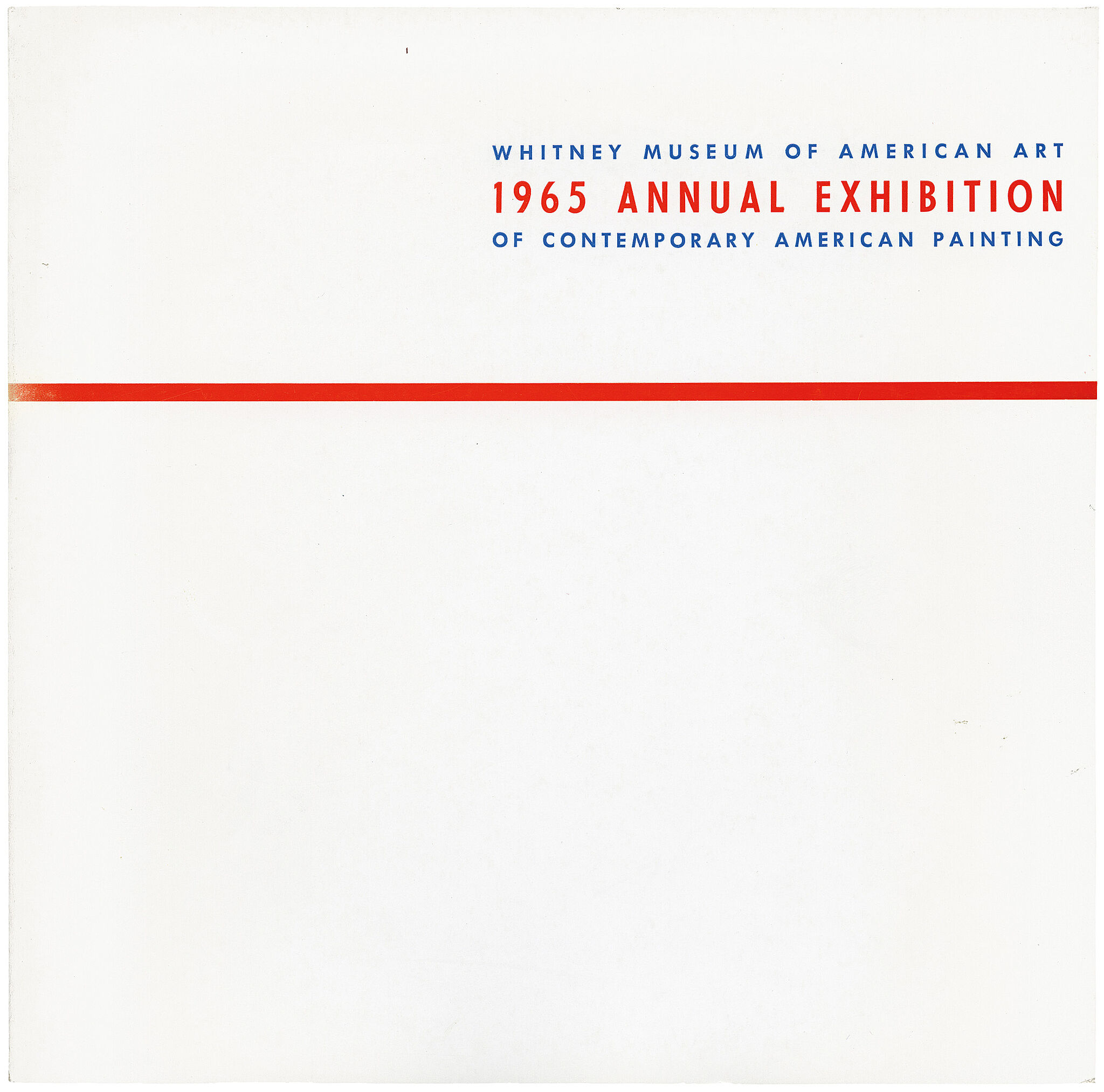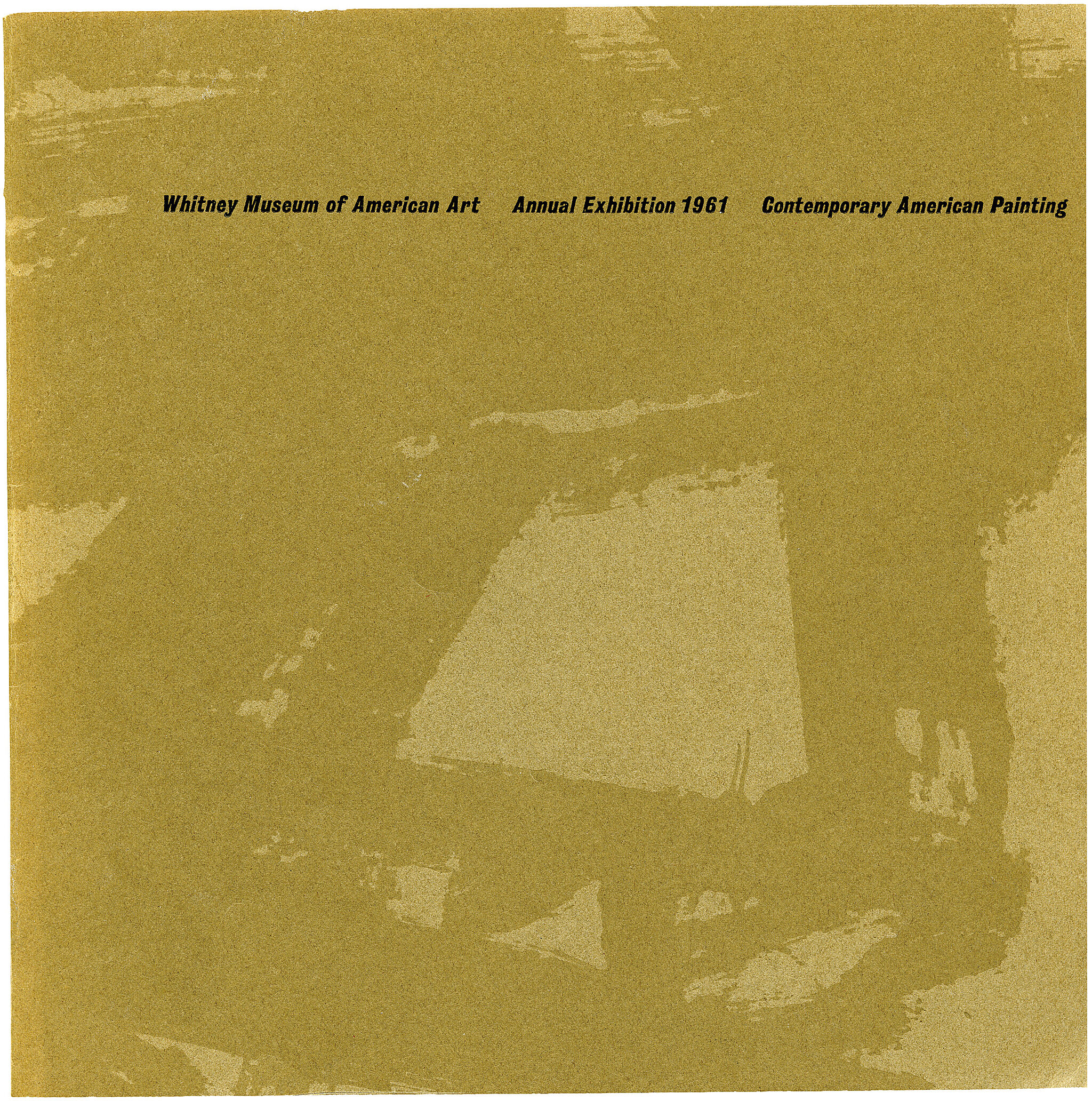Alfred Leslie
1927–2023
Alfred Leslie was an established Abstract Expressionist painter when, in 1962, he embarked on a pivotal series of large- scale portraits of friends and colleagues. Though a dramatic departure from his earlier painting, Leslie’s interest in figuration was already demonstrated in an earlier series of Polaroid “mug shots” of studio visitors, as well as in his experimental films and writing. For this new mode of painting, which Leslie called “confrontational art,” he sought to emphasize elements such as scale, frontality, and accuracy while eliminating color, space, light, and composition. The resulting grisaille portraits present monumental, three- quarter-length views of figures standing against planar gray grounds. Each is painted from separate eye-level views of the sitter’s head, chest, torso, and hands, a composite technique intended to “democratize” all parts of the body and allow them to be viewed simultaneously. Through these larger-than-life portraits, Leslie sought to create paintings that “demanded the recognition of individual and specific people . . . straightforward, unequivocal, and with a persuasive moral, even didactic, tone.”
In 1966 a fire in Leslie’s New York studio destroyed most of his work. This self-portrait, one of only four grisailles completed after the fire, is a rare surviving representative of his style from the early 1960s. Here, Leslie shows himself in his “worst light,” wearing a dour stare, a stained, rumpled shirt, and paint- splattered pants cinched below a protruding belly. This unflinching self-presentation and straightforward style have made the work an icon both of self-portraiture and the new realism of the early 1960s.
Introduction
First known as an experimental filmmaker and abstract expressionist, Leslie later turned exclusively to figurative painting, producing monumental portraits and a type of updated history painting. He collaborated with Robert Frank on the film "Pull My Daisy" in 1959, written by Jack Kerouac.
Country of birth
United States
Roles
Artist, cinematographer, collagist, painter
ULAN identifier
500006228
Names
Alfred Leslie, Alfred Lesley, Alfred Lippitz
Information from the Getty Research Institute's Union List of Artist Names ® (ULAN), made available under the ODC Attribution License. Accessed November 23, 2025.

